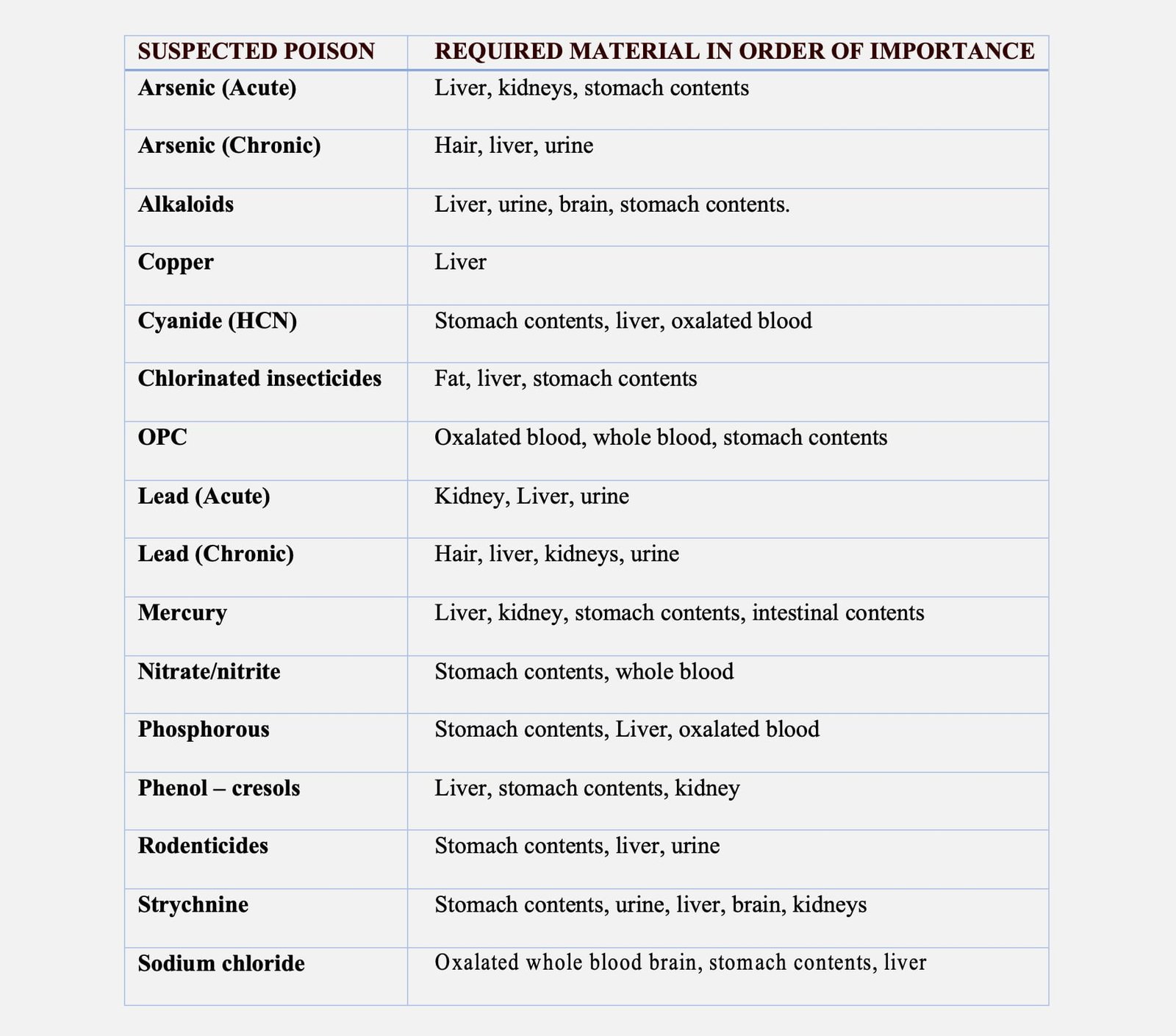TABLE OF CONTENTS
Submission of Specimens in Suspected Cases of Poisoning
Following submission of specimens of various organs in following suspected cases of poisoning performed:

Quantities of Specimens to be Sent

Viscera to be preserved for a period of 6 months and then destroyed after obtaining the permission from the magistrate.
Containers for the Material to be Preserved
Wide mouth glass bottle (2 litre) with air light stoppers (arsenic free).
Bottle should have:
- Case Number
- Nature of the contents
- Place and date of preservation etc.
- Signature of veterinarian done postmortem
Preservative
Alcohol or suitable for viscera (Except cases of alcohol, phenol, by other volatile substance). Saturated common salt also used.
Preservation by alcohol
- Whole organ in dipped into alcohol.
- Saturated common salt.
- Solid common salt.
Preservation of blood sample
- Sodium fluoride-20 mg/ml of blood.
- Sodium citrate (5 mg) and mercuric chloride mixture (0.1 mg)/ml of blood.
- Sealing of containers and other material.
Letter to the Chemical Examiner
Letter sent to the chemical examiner of sample, should have:
- Species sex, age, identification mark and location of lesions.
- Impression of the seal used in closing the bottle and description of seal.
- Separate necropsy report.
- Details of the purpose for which analysis is required.
- List of articles forwarded and mode of transmission.
- Well packed and labeled.
- Send 25 ml of preservative is separate bottle as sample preservative.
- Send copy of inquest.
Collection and Submission of Specimens for Histopathological Examination
- Fixing agents-formaldehyde, alcohol, mercuric chlorides, chromates, osmic acid, picric acid, etc.
- Important is 10% formalin.
- Specimen should be representative of the lesion with normal tissues – 0.5 -1.00 cm thick and 10 times volume of fixatives.

